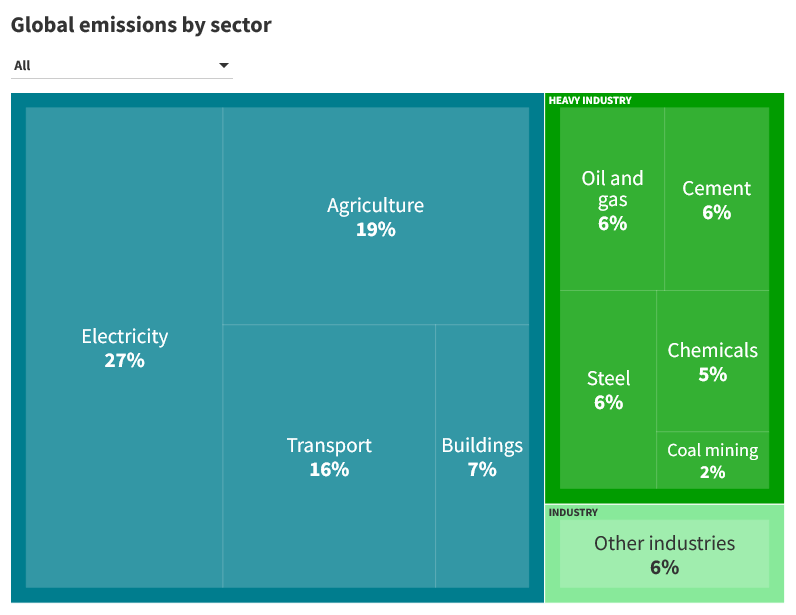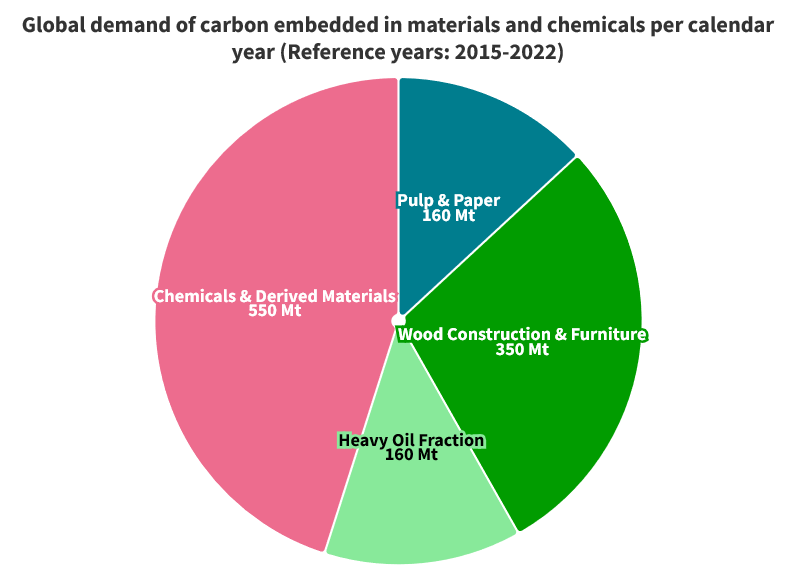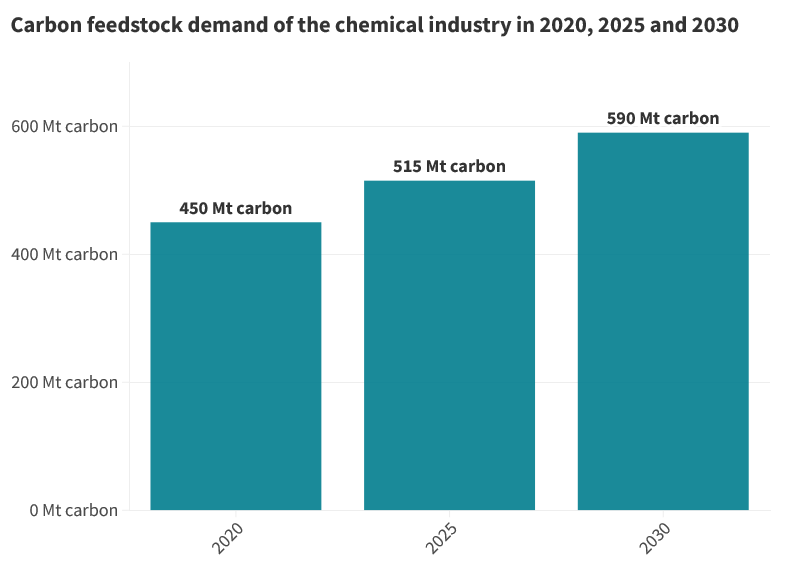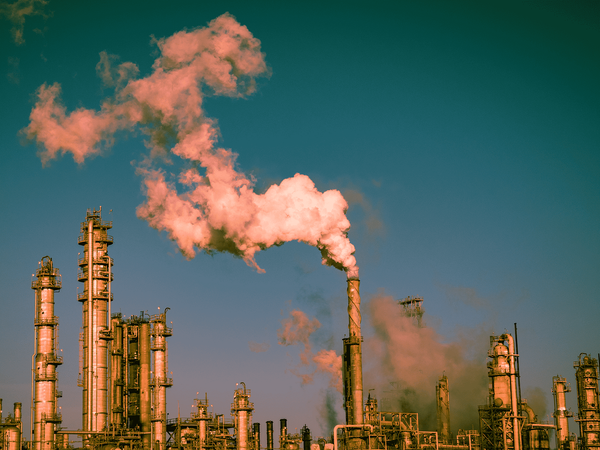Heavy industry: how to operate sustainably in the modern era?

Heavy industry materials, such as chemicals, steel, and cement, have a huge influence on our daily use of vehicles, buildings, and medical supplies. However, achieving carbon neutrality in its processes presents a massive challenge due to the substantial energy and heat requirements.
The industry produces goods that demand the usage of large and robust machinery, along with complex manufacturing processes. The goods are usually sold to government, businesses, and industries as they require huge investments in sizeable machine tools and extensive infrastructure.
Although the industry drives significant innovations, the problem lies in its considerable environmental footprint, attributed to the nature of its products and production processes. The estimated global emissions in 2023 reached more than 40 billion tonnes, with the industry sector making the largest contribution. The five major heavy industries—cement and concrete, iron and steel, oil and gas, chemicals, and coal mining—account for 80% of all industrial emissions (Figure 1).

Related: Strategies for businesses to overcome sustainability challenges and thrive
The huge demand for materials is another issue. Existing industrial processes heavily rely on fossil fuels for high-temperature heat, agents, and chemicals, leading to process emissions. Figure 2 shows the chemicals and derived materials, which are mainly used in heavy industry have the highest demand. Mitigating emissions in these sectors is a significant challenge—mainly because of the absence of readily available, near-zero emission technologies.

Challenges in achieving carbon neutrality within the heavy industry sector
One of the main challenges is the excessive use of materials. Figure 3 shows an example of steel production— one of the most popular materials used worldwide. Although global production saw a slight decrease of 0.1% in 2023 compared to the same period in 2022, about 1.1 billion tons, it still went up in some major economies. As of July 2023, China and India both experienced percentage increases of 11.5% and 14.3%, respectively.

Besides materials, heavy industry faces several distinct obstacles:
- Plants have lifespans, typically spanning 30-40 years. This means emissions from recently constructed plants are essentially "locked in" unless feasible options for retrofitting are available to decrease their emissions.
- Retrofitting is costly, and may prove technically unfeasible in some cases.
- Many processes demand high-temperature heat, hugely supplied by burning fossil fuels. Generating such heat from electricity, especially at a large scale is currently impractical and costly.
- Various industrial processes inherently generate emissions from chemical reactions. Addressing these problems needs technologies like Carbon Capture, Utilization, and Storage (CCUS) or fundamental shifts away from conventional production methods. It would also possibly need alternative raw materials with limited availability or unproven feasibility.
- Many industrial products, including steel, aluminum, and primary chemicals, are traded in fiercely competitive markets. This creates difficulty for producers to choose costlier low-carbon production methods for emission reduction without encountering pricing competition.
- Securing financing for the decarbonization process, particularly for developing countries. They are currently generating up to 90% of the overall heavy industry output.
- Disagreement between all affected parties, especially as the transition from conventional to cleaner energy sources may impact the jobs.
Related: Navigating challenges of sustainable investment strategies in focus
A clean energy world
In 2050, the worldwide energy landscape predominantly relies on renewable sources, with solar emerging as the primary contributor (Figure 4). Realizing this, we need commitment from all governments to collaborate closely with businesses, investors, and citizens.

Numerous strategies can significantly contribute to the reduction of emissions in heavy-industry sectors. These include enhancements in technology performance, improved material efficiency, and switching fuel. Here are some general directions:
- Understand the relationship between production processes, materials creation, and the end products or projects by focusing on achieving near-zero emissions.
- Establish a proper strategy to endorse innovative technologies and the efficient usage of materials.
- Promote or explore finances, such as grants and low-interest loans to adopt the near-zero emission technologies.
- Facilitate the agreement on common industry standards to measure emissions in producing different materials.
- Harmonize emissions measurement tools across plants, sectors, and countries to ensure consistency.
- Recognize the role of hydrogen-based fuels in addressing gaps where electricity may not be a feasible replacement for fossil fuels.
Related: Renewable energy investments call for stronger commitment to net-zero initiatives
The future of heavy industry
To achieve net zero carbon emissions, we require more than a 90% reduction in emissions from the heavy industry sector by the year 2050. This is especially challenging for developing economies as their factories and facilities are a relatively young age of 10-15 years.
Initiating incremental innovations, such as enhancing energy and resource efficiency and promoting material circularity in existing assets, serves as a starting point. Yet, the carbon feedstock demand of the chemical industry is expected to continue going up in the coming years (Figure 5).

Despite the challenges, heavy industry plays an increasingly vital role in the global economy, presenting new growth opportunities with the growing global population in the 21st century.
Related: Maximizing energy efficiency with solar-powered windmills
However, it demands a shift towards a cleaner future, constructing environmentally friendly buildings, establishing renewable energy facilities, and implementing technological innovations in production processes.



